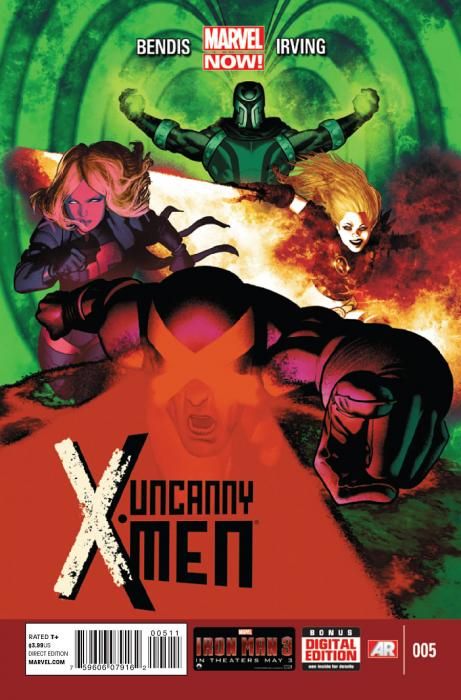"Uncanny X-Men" #5 by Brian Bendis and Frazer Irving continues the story of Cyclops' revolutionary team as Magik ends up facing an unexpected foe in Limbo and the students who have joined the X-Men -- both new and defecting -- attempt to understand the consequences of their choice.
Specifically, the book finally gets around to dealing with Magik, whose powers initially seemed unaffected by her experience with the Phoenix. As it happens, there have been consequences, but her connection to Limbo might actually mean they're much worse than she expected, not least because the entire team ends up being dragged into things as well.
As storylines go, it's fair to say the X-Men are never particularly at home with demonic invasions and mystical dealings. As characters most easily read as social outsiders or freaks of science, there's not a lot you can do with the X-Men and magic unless that conflict is the theme. It's too early to say for certain, but at the moment it's hard not to interpret the appearance of Limbo as that most dreaded of comic book paradoxes: a story about a story.
The rest of the book attempts to flesh out some of the new X-Men, something that's long overdue, even though the series is only a few months in. Most of these characters barely have anything so memorable as a name, let alone any coherent personality or motive, and up until now Bendis has been content to leave them in the background while they get freaked out. Throwing in the former Jean Grey students works in that it gives them more memorable characters to bounce off, but it also further diminishes their page time. It's easy to appreciate the creation of new X-Men characters, but so far they're batting on the levels of such well-remembered creations as Maggott and Stacy X.
At least Frazer Irving's artwork makes the issue stand out. A lot of it has the same design-led appearance as Bachalo, only without the exaggerated anatomy and tight, close-up panels. His style gives scenes a careful, choreographed look, and there seems to have been a conscious decision to emulate the colours of Bachalo's issues -- except in the panels set in limbo, which give the book a welcome injection of bright orange and purple.
"Uncanny X-Men" #5 is good (especially the artwork), but with the plot moving slowly in no particular direction and the characters failing to bed in, it's hard not to look across the floor at "All-New X-Men" and ask what "Uncanny X-Men" is doing with itself. With a team like this, just "good" doesn't feel like enough.

